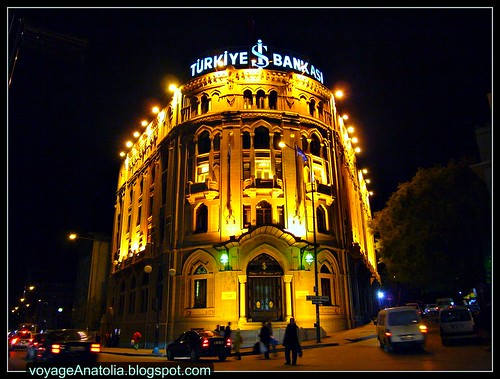
Is Bank Building at Ankara, originally uploaded by voyageAnatolia.
First headquarters of Türkiye İş Bankası in Ankara
The building was designed by the Istanbulite Levantino Italian architect Giulio Mongeri in 1929, who also designed many other important buildings in Istanbul and Ankara; such as St. Antoine's Church (1906-12), Maçka Palas (which houses Armani Café and Gucci) in Nişantaşı and the Neo-Byzantine style Karaköy Palas bank building in Karaköy (Galata), Istanbul; Ulus branch of the Ottoman Bank (1926), the Inhisarlar (Monopolies) Headquarters (1928), Ziraat Bank General Headquarters Building (1926-29) in Ankara.